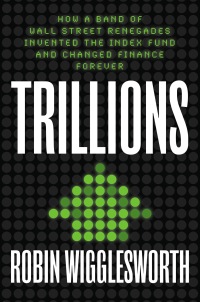QUESTION 2 Central Bank Restores Reserve Ratio to Pre-Covid Era Levels. By Financial Tribune September 27, 2020 14.23 The Central Bank of Iran said on its website on Saturday that it has increased banks' reserve requirement ratio to 10-13%, after it was cut in March, to support businesses impacted by Covid-19. According to the Money and Credit Council, the CBI determines the reserve requirement ratio of banks. The central bank is allowed to set the rate between 10% and 13%, based on lenders' law abidance. The ratio was reduced after the coronavirus spread earlier this year, to help provide banks enough resources for supporting businesses. An estimated 750 trillion rials ($2.7 billion) was paid to struggling businesses impacted by the deadly virus. The loans were mainly given to SMEs hit hard by the pandemic. As per the CBI's bylaw, banks were supposed to allot one-third of their legal reserve in financial aid to support businesses against the Covid-19 impact. The CBI has given banks three days to meet the newly announced reserve requirement. Those unable to comply can transfer the amount in three instalments with 0.001% interest. The CBI will automatically deduct the sum from banks' accounts with the central bank, in case lenders fail to pay the monthly installments. Reserve requirements not only guarantee deposits, but also serve as a CBI tool for controlling money circulation, inflation and liquidity growth. Generally, the CBI reduces the reserve requirement for disciplined banks from 13 to 10%, but there are no cuts for unruly banks. In short, the cut in banks' reserve requirements is one disciplinary tool to manage lenders. Confirmed corona cases in Iran surpassed 443,086 on Saturday with the death toll rising to 25,394. Health officials said an estimated 372,051 patients have recovered. What are the effects of adjusting the reserve requirement ratio done by the Central Bank of Iran in September 2020 to the Iranian economy? Please provide at least FOUR (4) points with clear justifications/examples to support your answer. (20 marks) QUESTION 2 Central Bank Restores Reserve Ratio to Pre-Covid Era Levels. By Financial Tribune September 27, 2020 14.23 The Central Bank of Iran said on its website on Saturday that it has increased banks' reserve requirement ratio to 10-13%, after it was cut in March, to support businesses impacted by Covid-19. According to the Money and Credit Council, the CBI determines the reserve requirement ratio of banks. The central bank is allowed to set the rate between 10% and 13%, based on lenders' law abidance. The ratio was reduced after the coronavirus spread earlier this year, to help provide banks enough resources for supporting businesses. An estimated 750 trillion rials ($2.7 billion) was paid to struggling businesses impacted by the deadly virus. The loans were mainly given to SMEs hit hard by the pandemic. As per the CBI's bylaw, banks were supposed to allot one-third of their legal reserve in financial aid to support businesses against the Covid-19 impact. The CBI has given banks three days to meet the newly announced reserve requirement. Those unable to comply can transfer the amount in three instalments with 0.001% interest. The CBI will automatically deduct the sum from banks' accounts with the central bank, in case lenders fail to pay the monthly installments. Reserve requirements not only guarantee deposits, but also serve as a CBI tool for controlling money circulation, inflation and liquidity growth. Generally, the CBI reduces the reserve requirement for disciplined banks from 13 to 10%, but there are no cuts for unruly banks. In short, the cut in banks' reserve requirements is one disciplinary tool to manage lenders. Confirmed corona cases in Iran surpassed 443,086 on Saturday with the death toll rising to 25,394. Health officials said an estimated 372,051 patients have recovered. What are the effects of adjusting the reserve requirement ratio done by the Central Bank of Iran in September 2020 to the Iranian economy? Please provide at least FOUR (4) points with clear justifications/examples to support your answer. (20 marks)







